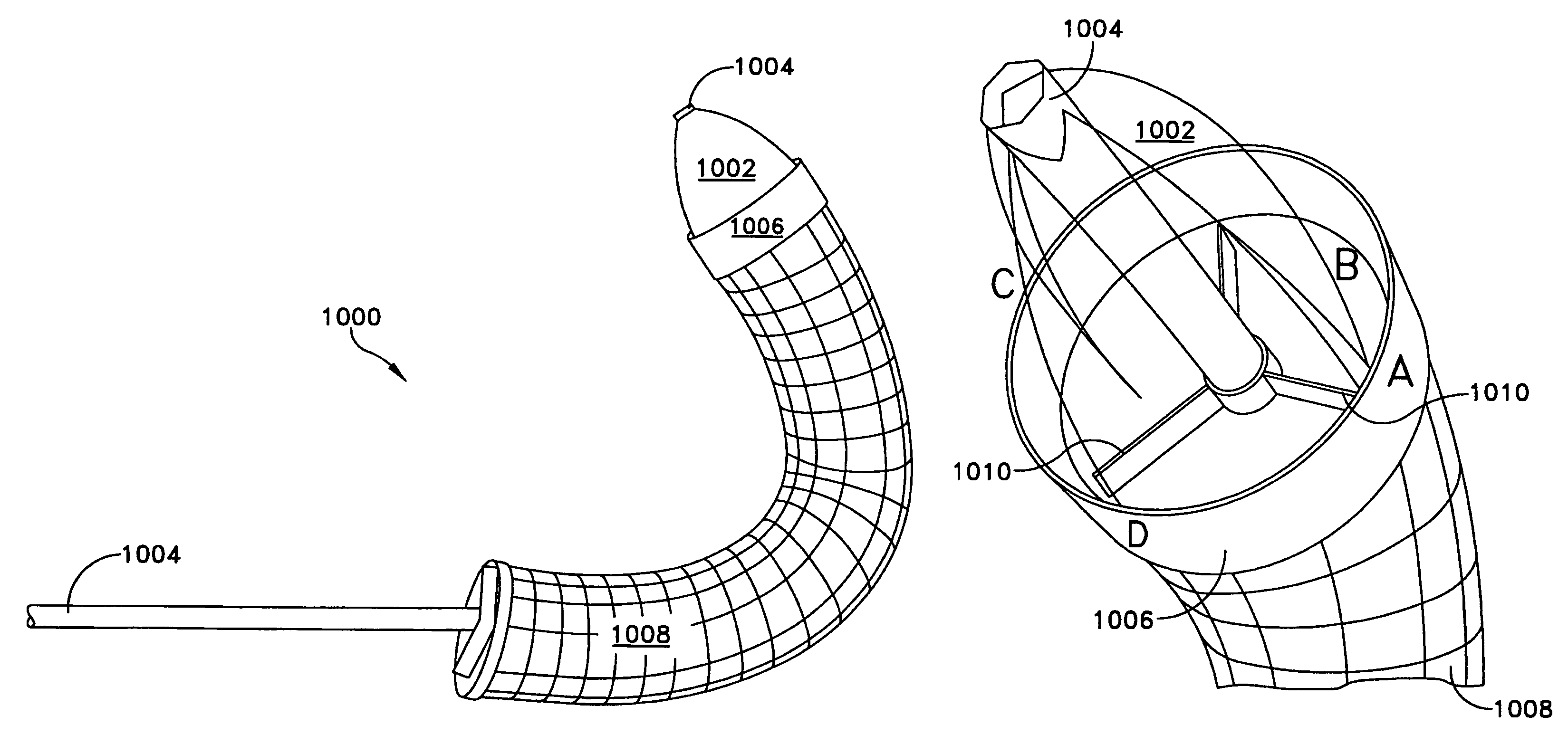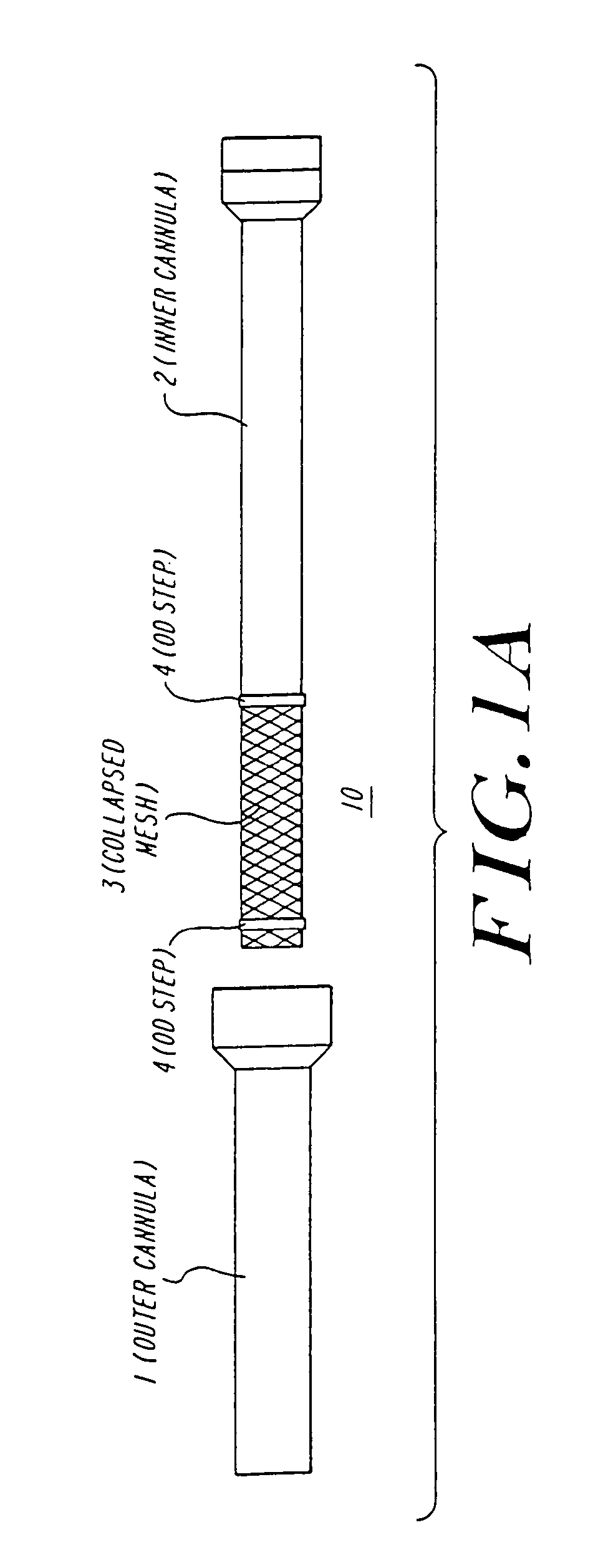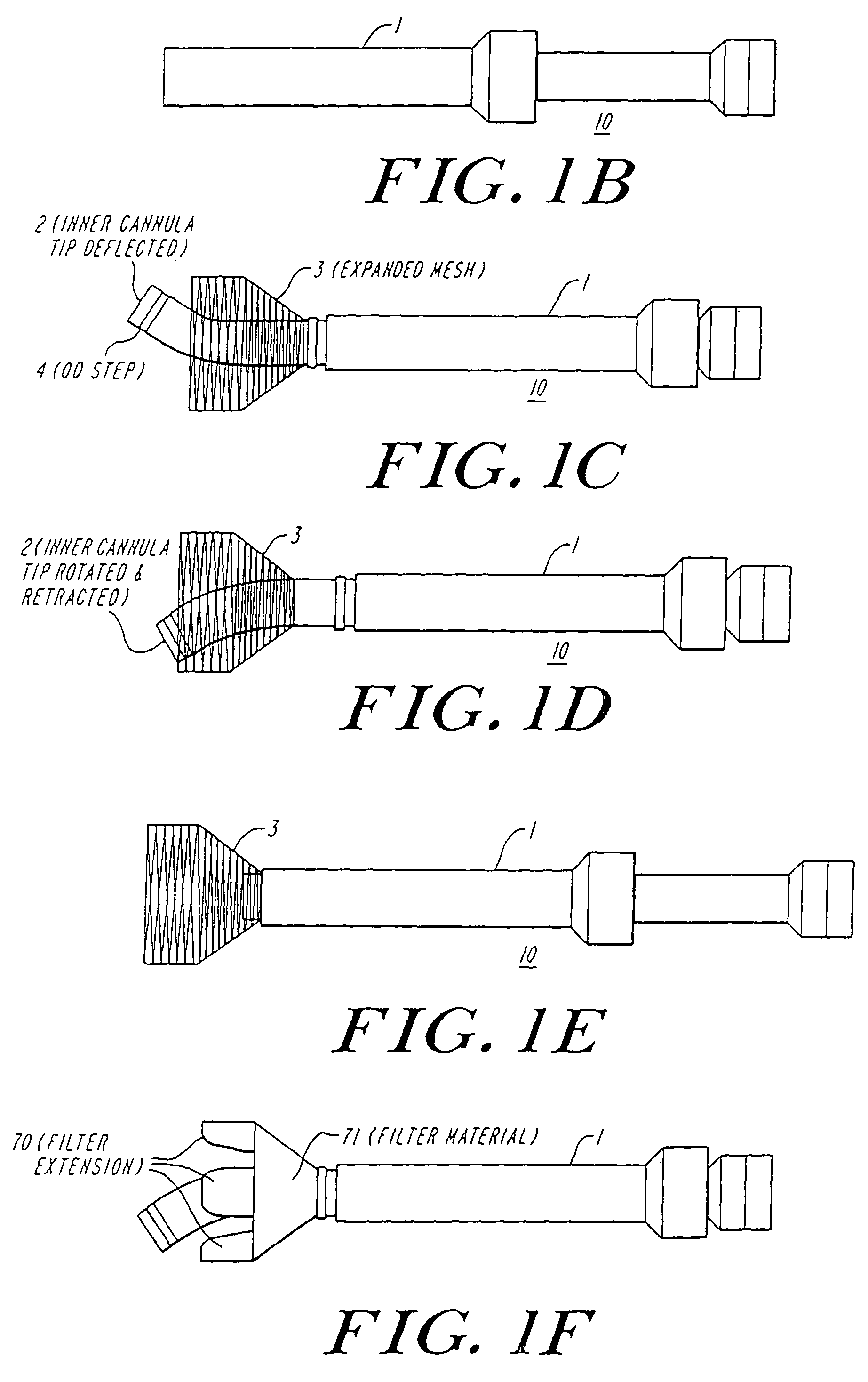Cardiac valve procedure methods and devices
a cardiac valve and valve technology, applied in the field of surgical procedures and devices, can solve the problems of one effective treatment for patients with aortic arteries, substantial and invasive undertaking for patients, and little progress in the development of safer and less invasive valve delivery systems, so as to enable the performance of an operation
- Summary
- Abstract
- Description
- Claims
- Application Information
AI Technical Summary
Benefits of technology
Problems solved by technology
Method used
Image
Examples
embodiment
Preferred Embodiment
Valved Arch Filter
[0154]In accordance with a further feature of the invention, there is provided a novel valved arch filter device 1000 (FIG. 25) which provides a temporary one-way valve between the coronary ostia (where the coronaries come off the aorta) and the origin of the great vessels (i.e., those going to the arms and brain).
[0155]The temporary one-way valve performs the function of the native aortic valve during the brief period after the native diseased valve has been removed and before a prosthetic valve has been implanted. Ideally, this temporary valve would sit in exactly the same position as the natural valve, but this area needs to be kept free for fixation of the prosthesis. Therefore, the temporary valve is located downstream from the natural aortic valve. In this position, the left ventricle is spared the hemodynamic stress of acute severe aortic insufficiency. That is to say, if one simply removed the aortic valve on a beating, unassisted heart ...
PUM
 Login to View More
Login to View More Abstract
Description
Claims
Application Information
 Login to View More
Login to View More - R&D
- Intellectual Property
- Life Sciences
- Materials
- Tech Scout
- Unparalleled Data Quality
- Higher Quality Content
- 60% Fewer Hallucinations
Browse by: Latest US Patents, China's latest patents, Technical Efficacy Thesaurus, Application Domain, Technology Topic, Popular Technical Reports.
© 2025 PatSnap. All rights reserved.Legal|Privacy policy|Modern Slavery Act Transparency Statement|Sitemap|About US| Contact US: help@patsnap.com



